Trampolines are considered one of the best forms of fun entertainment, and that’s most of the time. They do not require you to leave your home; if your kids use it, they will be under supervision, and considered one of the most hygienic sports.
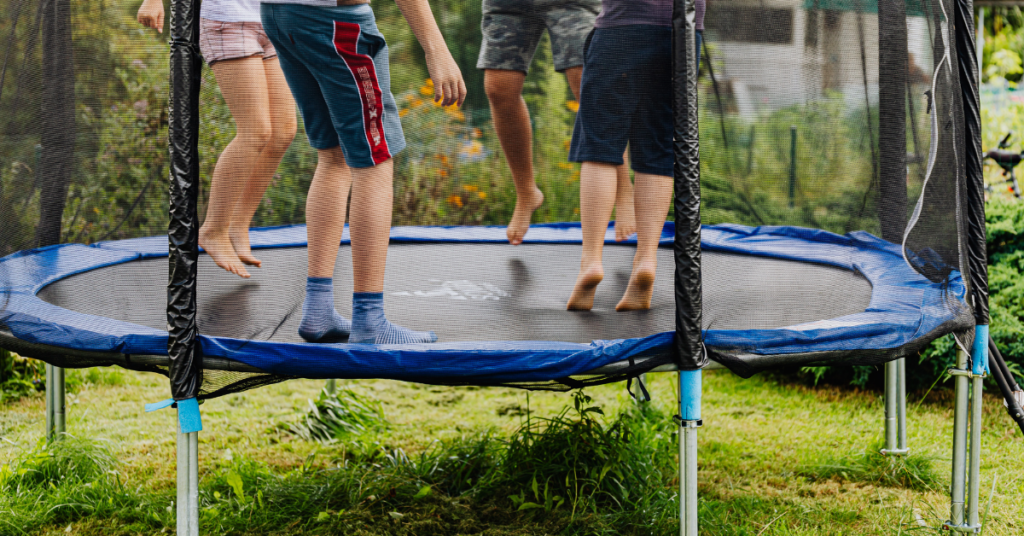
However, getting your kid on a trampoline would be the safest activity for them; if the preventive measures are in place. First, let’s have a quick view of the sizes of a trampoline. These sizes are considered by the breadth of trampolines from the maximum widest points, from the net poles to the edges of frames and legs.
- Trampoline up to 8ft or 2.7 meters in size are the small trampolines
- Trampoline up to 10ft, or approximately 3.23 meters, are the medium trampolines
- Trampolines up to 12ft approx or 3.78 meters are categorized as large trampolines
- Trampolines above 14ft approx or 4.36 meters would be extra large trampolines.
Then we have the matt sizes too, like small, medium, large and extra large.
- 3.82 meters of a mat is considered to be an extra large size
- 3.24 meters of a mat is considered to be a large size
- 2.67 meters of a mat is considered to be a medium size
- 2.05 meters of a mat is considered to be a small size
However, even after being acknowledged by all these size guides, you can not just go out and get yourself a trampoline; first and foremost, all the features should be considered, and then the most critical factor is the size of your trampoline.
Trampoline installation depends on the size of your trampoline. If kids, you need to buy a smaller one. If they are to be used by adults, then a bigger one. Gymnasts or athletes need a rebounder. The size dramatically matters even if it has to be installed in the backyard.
Not to miss out on your budget! But, of course, the other factor it depends on is the budget. Nonetheless, you need to reconsider where you are installing your trampoline. It needs to be free from all the sharp edges, land slopes, holes, and obstacles meanwhile maintaining at least 1.5 meters of distance from each side of the trampoline.
After everything above has been decided, you need to check on the desired shape of your trampoline, as each figure has different pros and cons.
First, let’s jot down some familiar shapes used at home or bought mainly by consumers.
Types of Trampolines
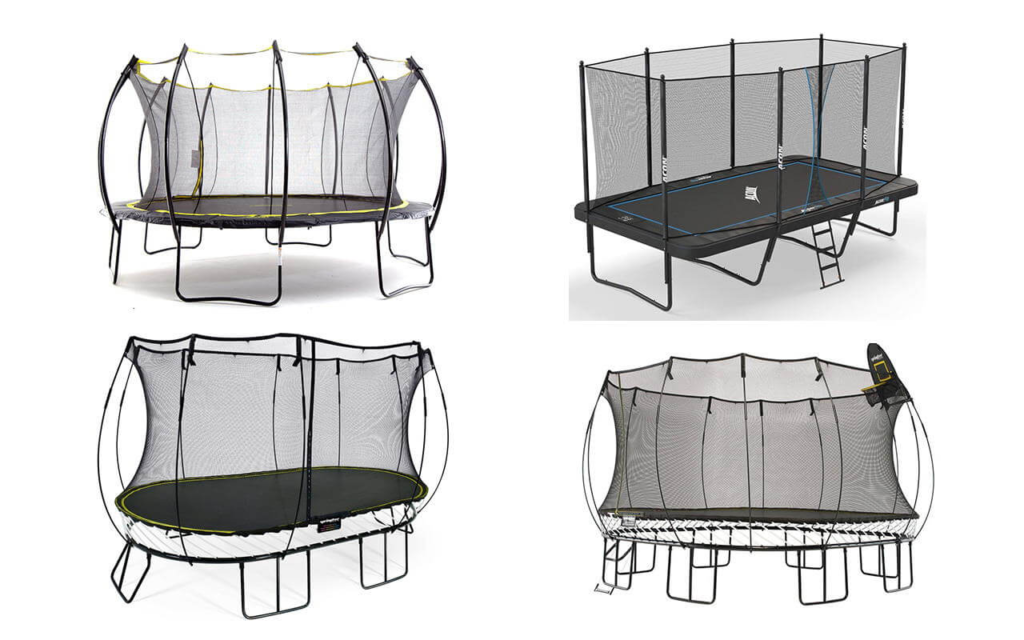
- Oval Trampoline
- Round or circle Trampoline
- Rectangular Trampoline
- Square Trampoline
- Octagon Trampoline
- Hexagon Trampoline
- Mini Trampoline or A Rebounder
- Built-in Trampoline.
Sizes Of A Trampoline According to Ages
However, there are no specific guidelines on when a person can use a trampoline. Still, generally, these are the age limits associated with trampoline sizes. Not to forget, they can vary as per the level and experience of the users.

For instance, a little gymnast with more experience would be okay using different trampolines, bigger or smaller, even without measures. Again, though, it all depends on the expertise.
It is assumed that these trampoline sizes would be perfect for kids and adults.
- A toddler trampoline is suggested for kids ranging from 1-3 years.
- For kids aged 4-5 years, a toddler trampoline or 4.5ft, 6ft, or 8ft trampoline would be fine.
- The size of 6ft, 8ft, 10ft, and 12ft would work fine with the age of 5-7 years,
- Similarly, 8-10 years would be fine with 8ft, 10ft, 12ft, and 14ft of trampolines.
- 10-12 years of age can use 12ft, 14ft, 16ft trampolines
- While 13 years and above should not go with a trampoline lesser than 14ft-17 feet in size.
After guessing the right size for you or your kid, you have to rematch the circumstances you considered before, like the size of your backyard and whether that gets along well with your trampoline.
Once you are done with all this comes the additional parts and safety measures; you need to see if you require a safety net that has not been included in the trampoline kit when bought. You need to check on anchor kits and ladders as well.
Purchasing A Trampoline Pre Measures
Let’s discuss in detail all the points mentioned above that are the basics that need to be followed when buying a trampoline. But, of course, it is always better to ensure certain things that will make your life a little easier after purchasing a trampoline.
If considered and solved beforehand, all these issues would be convenient; however, if you ignore them, you might end up being suffocated and all troubled.
Enclosure Net
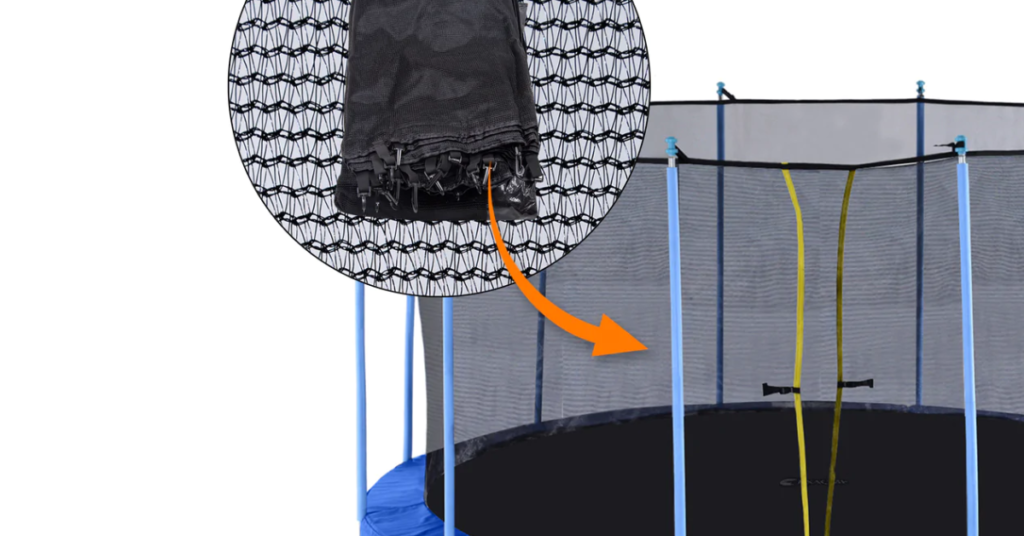
You may wonder about the link between the trampoline net and the size that needs to be considered. The reason for an enclosure net has always been to provide you with ultimate care and protection.
How are they linked? When the trampoline sizes like small and medium have been bought, they are usually bought for kids; as long as anything is used for kids, it needs the utmost care and safety due to their vulnerability. Therefore, an enclosure net must protect the kids from falling out or injuring themselves.
Adults, on the other hand, are better at holding themselves and maintaining balance; they might get stable before they fall or do not harm themselves much as they usually use a large or extra large trampoline.
However, misbalancing on edge would be even more dangerous for adults as they tend to bounce a little higher and drop down with a total weight of their own. So even in that case, an enclosure net is required to hold back the person.
A Trampoline could never be accepted as a safe outdoor activity unless it has an enclosure net. So, in any case, a trampoline enclosure system must be installed.
But a few conditions should be maintained for the net enclosure, make sure it is super tight by grip from each bar to bar and close its zipper (the entry door) whenever the kids hop on in case it’s left open, and the kid might fall from that edge while bouncing.
Your Backyard Space
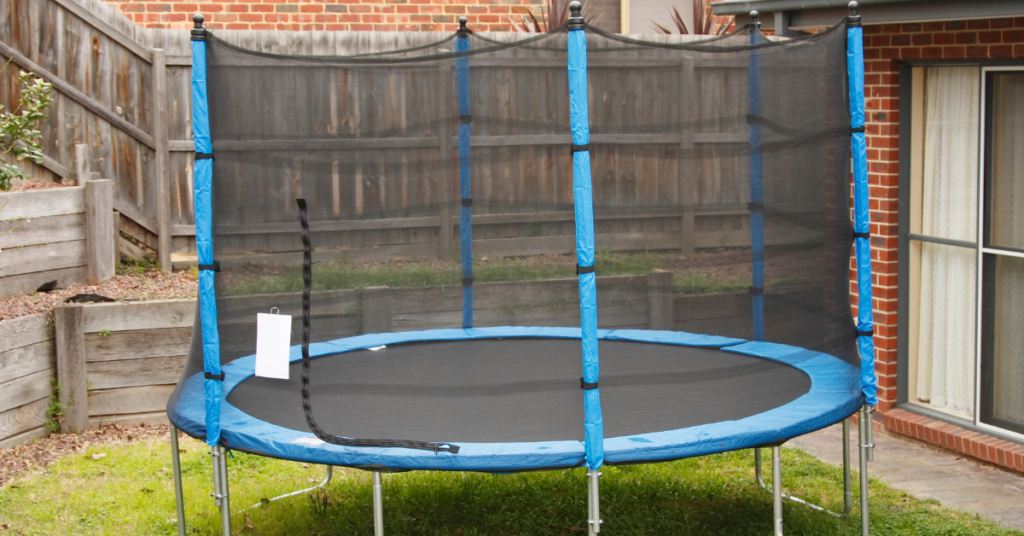
Installing a trampoline has everything to do with your backyard, so all you have to do is take the appropriate backyard measurements and start looking for a trampoline. However, before we jump on other details, let’s see how you can measure your backyard first.
Backyard Measuring
- Firstly, grab a measuring tape and measure the diameter of your trampoline.
- Then, to make it easier, use a string and cut it up to the size of your trampoline’s diameter.
- Now attach the string to a stick and go to your backyard, and measure the distance of your backyard by placing the bar in the center of the point to want your trampoline.
- Once you are at the center point, grab one end. Then, move around the backyard with the sting and the bar in your hand; you will know whether the trampoline you are going for suits you to be in your backyard or not.
Once you are done measuring your trampoline and the surface of your backyard; now you need to clean the place. Cleaning the site would include letting the area free from all unnecessary sharp objects, like branches, fences, bushes and slops, and anything that would come in your way of bouncing.
Another important fact is to ensure you leave at least 1.5 meters of space throughout the trampoline edges. Make sure everything is safe while you enjoy your bounce on it. This 1.5 meters of the room will help you to stay within your boundary if you fall off the trampoline.
Other Considerable facts
- Always go for a smooth and even surface and a flat one; however, if the place you plan on installing your trampoline is not even or it’s a slope, then you need to make sure the pitch is not more than 3 degrees of height.
- Also, Watch out for the tree branches or any wires if they get along your way while bouncing; however, if the place still has all of these, ensure they are above 6 feet.
- Finally, ensure you get rid of all other obstacles in your way.
However, it has been seen that most of the injuries caused by backyard trampolines are a cause of pediatric morbidity: as stated by The American Academy of Pediatrics.
Jumping Capacity Of A Trampoline
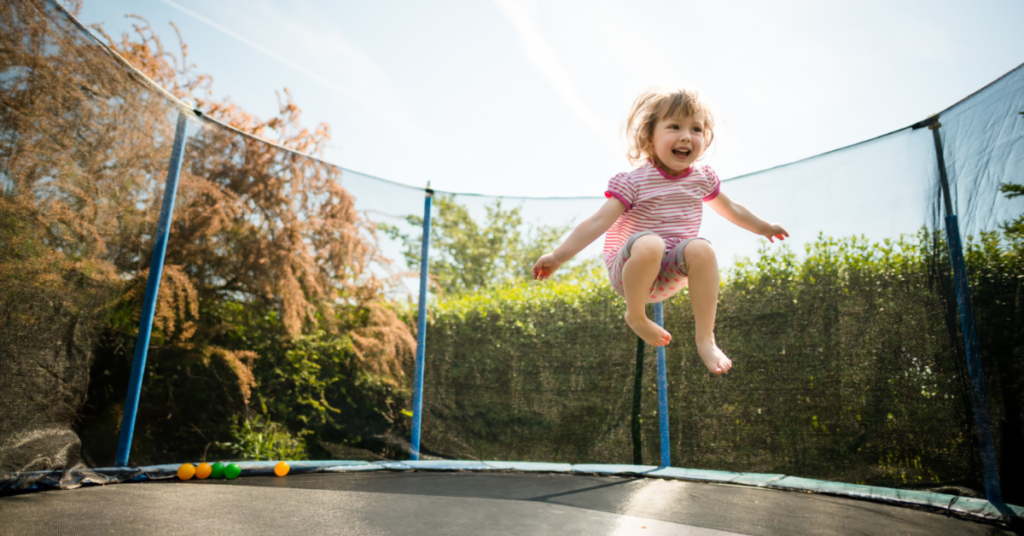
Trampoline is such an entertaining and eye-catching activity that everybody gets triggered watching others bouncing the fun out of them; staying away wouldn’t be easy, which might lead to a couple of people hopping onto the trampoline altogether. Therefore, the trampoline might fall apart or get torn due to excess weight.
So, it’s better to let your family have protected fun rather than saving a few hundred dollars. Select a trampoline that has a larger diameter. That might help in indulging more than one person. Along with the larger diameter, make sure to get yourself a superior quality trampoline that would bear the pressure entirely.
Just considering a general overview, if your family is good at the control and they bet on using the trampoline in an organized manner, then usually an 8-10ft trampoline would be enough for them.
A larger surface is recommended because if a couple of kids hop onto it, they will be attracted to the center. In addition, the chances of collision are higher if they try to repel each other, and the possibilities of falling out increase.
Most In-Demand Sizes Of Trampolines
The most recommended trampoline is at least 8 – 10 feet. The 8 feet trampoline is preferred and best recommended due to its size, which is most convenient in terms of adjustment into a typical backyard.
Usually, trampolines are bought for kids, and kids tend to use them more often than adults; as they enhance the physical activities of the kids and teenagers. So this size of 8 feet accommodates two kids easily of different weights.
However, it is suggested not to let kids of enormous weight differences get on to it. The importance might get off-limit, as the capacity they can bear is around 72kgs.
If the adults want to get the taste of fun with the toddlers or kids, a 10 feet trampoline will work fantastic.
Why Are These Specific Trampolines Preferred According To Ages?
The chart above has already shown us which trampolines suit well with certain ages. So let’s briefly examine why they are the best choice. Trampolines are always evaluated with enclosure netting; the net has been included in the below comparisons.
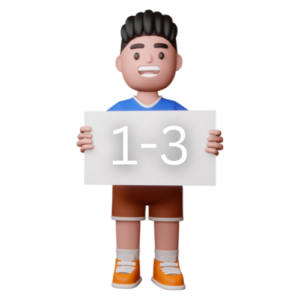
Kids Ranging One – Three Years
Trampolines selection for a kid of one year or a little above won’t be challenging, as it’s all about how they jump and nothing else.
Due to their ages and height, the kids tend to have low-intensity jumps. Therefore, as long as it’s enclosed with a net, it’s safe for children to hop on.
However, what needs to be taken care of is the ladder you will buy additionally. Buy a good quality ladder as the kids like to jump around everywhere out of excitement. So, if they even try to hop onto a ladder or step with power, it makes them break, causing injuries. So, for longevity and safety, it is suggested to have a good quality ladder.
Ensure the ladder and the trampolines are safely padded before you let your child play on them.
A three-year-old will have the same circumstances if you do not plan on jumping with your little kid on a mat.
However, if there are chances of you sharing a bouncing time with your kid, in that specific case, instead of a minor or mini trampoline, a 6 feet trampoline is more preferred, keeping in mind guarded by the enclosure net.
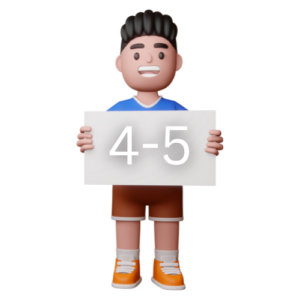
Four – Five Years Of Age
Now, here comes a little challenging part, you might get confused regarding the size of the trampoline, whether to buy a 6 feet trampoline or a mini trampoline.
In addition, this could be better decided by keeping the child’s build of his height—his weight, and how good they are at handling themselves.
However, when installing them, keep in mind that the space requirements of at least one – 1.5 meters have been maintained and obeyed.
Again, according to the experts, the best-decided range is 6 – 8 feet in diameter when a five-year-old kid is considered. But the enclosure and safety paddings must be installed when fixing the trampoline as kids of these ages are pretty vulnerable and believes in uneven and reckless hoping.
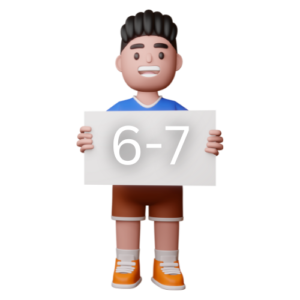
Six – Seven Years Of Age
The best suitable trampoline for a six-year-old could be none other than a perfect 10 feet trampoline. It is the best fit for a kid as long as it is enclosed with a net and covered with safety padding.
However, if your backyard is shorter, do not buy a smaller trampoline for your six-year-old. It will be nothing more than the disposal of the money. A grown-up kid requires an open space for a trampoline.
Eight – Nine Years Of Age
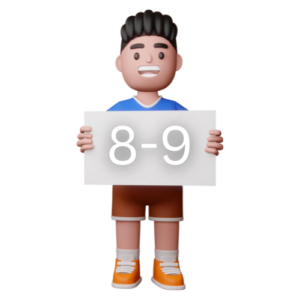
The preferred size for these nine years would be a perfect 12 feet, but the bigger, the better. Even 14ft would work excellently. However, try to insert the place without obstacles, hurdles, or even hard, sharp objects to avoid injuries.
It is assumed that the kids at or above nine years can judge the risks and outcomes of an action, so if not 12 feet, you might go a little lower as well. The kids of this age would be able to manage, but if there are a couple of kids, it will limit the space for them to have fun.
So, if you have the space available, go for the bigger one without any doubt. Yet again, trampoline fun is the utmost experience with the plus of exercise in it, do not bound your kid by limiting the space available to the kid; go for as much more extensive as you can.
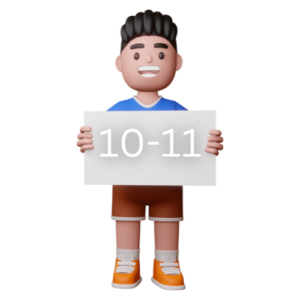
Ten – Eleven Years Of Age
You will start to notice a little more experimental bounces coming out of your kids, their eagerness to try on flipping front and backward. Their tendency to jump a little higher every time they bounce or experiment, like reflecting on the edges.
However, keeping all these in mind, a trampoline of size 12 feet or even a 14 feet trampoline would work fantastic.
But if you find out your kid is trying all these moves, please stop them immediately, as these gymnasts’ tricks should be performed under special supervision.
Furthermore, do not precisely leave your kid unattended on a trampoline at and after this age.
When your kid finally turns eleven, a teenager-era tadaaaah! You have to get them the largest, like an xl or XXL trampoline, as this era has to be an exploration era. Therefore, you need to get them as much space as possible to enjoy the time and fun.
Although more giant trampolines are of high quality and expensive, it’s worth a while. You don’t have to get them fixed or repaired again and again.
However, the kids can distinguish between dos and don’ts but do not let your kid have fun with the enclosure net and safety padding. They might get hurt if they fall harshly, even on the trampoline.
Perfect Age To Step On A Trampoline
Nonetheless, the best and the suggested age for your kid to start trampolining is six years. The experts have explicitly mentioned that kids below six have a lesser bone tendency. Therefore they tend to break even more often and are prone to injuries.
In addition, the American College Of orthopedic surgeons has backed up the age limit, and The American Academy of Pediatrics that a trampoline is only safer for the kid to use after he turns six. But, again, this is because the kids’ bones start to strengthen after this particular age.
According to The American Academy of Pediatrics results, the trampolines have resulted in a lot of fractures and sprains from home and theme parks.
Therefore, a good trampoline must be used to let the kid explore the fun of the trampoline completely without limiting the surface to them.
Seven-year-old kids have been blessed with the most enthusiastic culprits characteristics you could imagine. But, of course, their ability to go wild and cross or test their limits could be dangerous sometimes; but as it’s a growing age, every kid gets to experience the same.
Hence it is not suggested to go for a trampoline lesser than 10 feet. However, if you have more space and can afford a good size, it is recommended to go for it as big as possible. A 12ft, 14ft, 16ft, whatever you can manage but make sure it has all the preventive measures attached.
Few Other Guides For A Trampoline
We have covered all main aspects of trampolines, from their sizes to their uses and installations, with precautions. First, however, let’s look at the other random trampoline-related essential questions that might consume a few minutes of yours when you are looking at a trampoline.
The Availability Of A Trampoline By Diameters

Assuming 6 feet or 183 cm trampoline is a slightly significant trampoline.
Considering it is the base trampoline, let’s compare it with other trampolines to know the bases of the diameter available.
- The six-foot trampoline is around 183 cm in diameter; meanwhile,
- The giant trampoline of seventeen feet is approximately 518 cm in diameter.
- The enormous fifteen feet trampoline is about 457 cm in diameter,
- The fourteen feet trampoline is about 427 cm in diameter,
- and the twelve-foot trampoline is about 366 cm in diameter.
- The ten feet trampoline is about 305 cm in diameter.
- The eight feet trampoline would be an approx of 243 cm in diameter.
This measurement option will help you understand better if you are unsure how much a meter is.
Spring Count Of A Trampoline
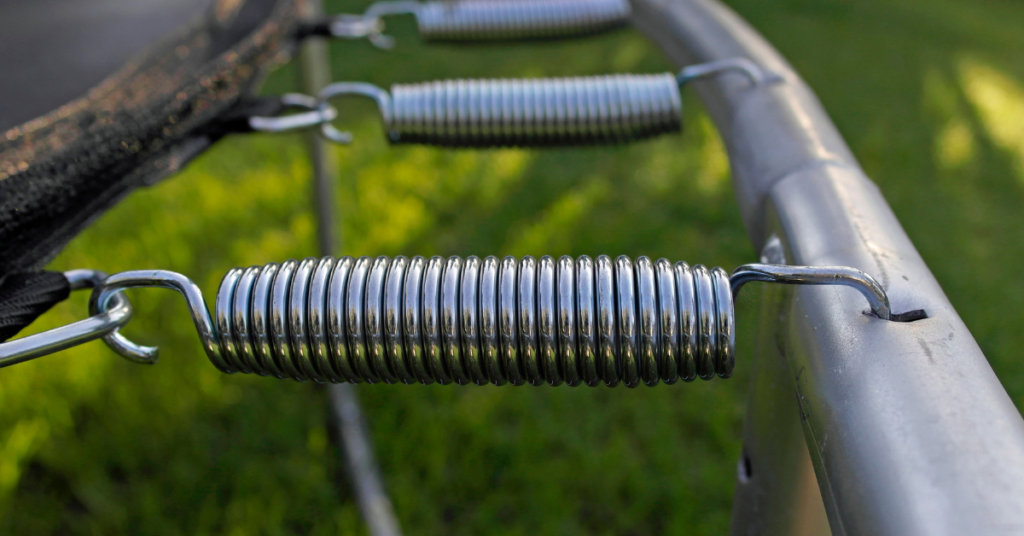
Springs are the sole reason your trampoline would provide you with bounces, yet it entirely depends on the size of the trampoline. The bigger the trampoline, the more capacity it has to accommodate more springs.
The limit set out here on average is for a 14ft trampoline. At least 96 spring rolls should be present, considered an average perfect parameter. However, this giant trampoline with more springs needs thick padding to avoid any sort of harm that might occur due to springs.
Height Of A Trampoline
So, with the diameter covered, how can we miss onto peaks? So, let’s see what heights does trampoline has to offer us. The trampoline height depends on the model and design you are opting for. We have different categories and customization as an offer to buy a trampoline.
Generally, the average lowest from the ground is usually two feet, considering the trampoline is minor, like six feet on eight feet. However, the larger would have a height of three feet. There are no significant differences in the measurements of the trampolines.
Trampolines and enclosure nets must pass on the different certification levels to prove their authenticity; the surface is not allowed to touch the ground while bouncing. However, if you exceed the weight limits, the manufacturer wouldn’t be held responsible for any of that. The rule applies to every part of the trampoline that has passed the test.
Certification
The certification that needs to be given in terms of a trampoline:
- EN71-14
- CE Testing
- TUV
- GS.
These certificates assure you that your kids won’t get hurt, as the build of the trampoline is safer. So now you know what you check when you approve a trampoline or a trampoline.
Nonetheless, for the enclosure net, the trampoline has to go through the test EN71-14.
In-ground Trampolines
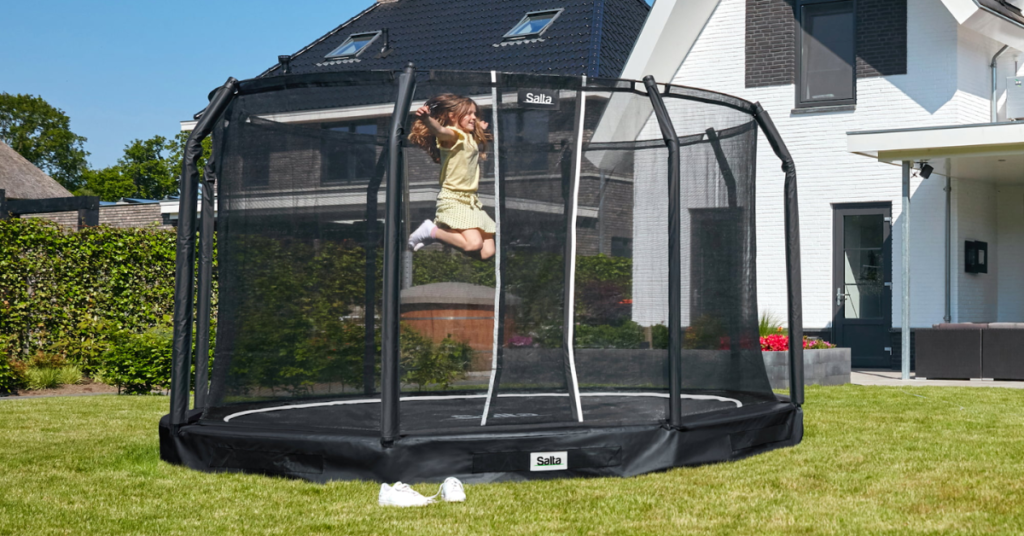
While talking about the heights, let’s have a quick overview of the trampoline that has to be buried in the ground.
Even its peak needs to be checked as well, but beneath the trampoline. The middle hole needs to be dug at an estimate of 60 cm in diameter, and the digging has to be a size of a trampoline underneath a trampoline, i.e., it is around 25 cm deep.
Once done, it should look like a bowl, yet it again differs as per the shape of the buried trampoline.
Trampoline With A Touch Of Technology

Are you aware that even a trampoline can be an intelligent one?
Weird yet fantastic, no?!
The project has been under development by tgoma, a springless yet smart trampoline, is on its way.
This will help you calculate your movements and activities by activating Bluetooth and adding all the data displayed on your trampoline screen. You will get to have complete information about your workout.
Trampolines: Factors That Might Affect Your Budget

Okay, so the cost of the trampoline is the only thing that does not depend on the size of the trampoline; you won’t get to hear that it’s a significant trampoline; thus, it costs more than a little one. No! It depends on the quality and features the trampoline has to offer us.
The factors that might affect your price ranges:
- The material in use plays a significant role; the frame is superior quality, the heavy padding leads to an acceptable period of durability, and it is weightless.
- The new technology touch would be a boost in the price for sure.
- The trampoline’s tendency to bear weight is a good hit to a price.
- The trampolines that have passed the safety certification are expensive due to the protection it provides.
- Last but not least, the area it has been manufactured affects the price.
However, the price ranges are pure estimates depending upon how brilliantly they are built. It might be a little lean on the size, but usually, and most of the time, the above factors are the reason for cost setting.

3 thoughts on “Trampoline Size Guide – Our Ultimate Guide For 2024”